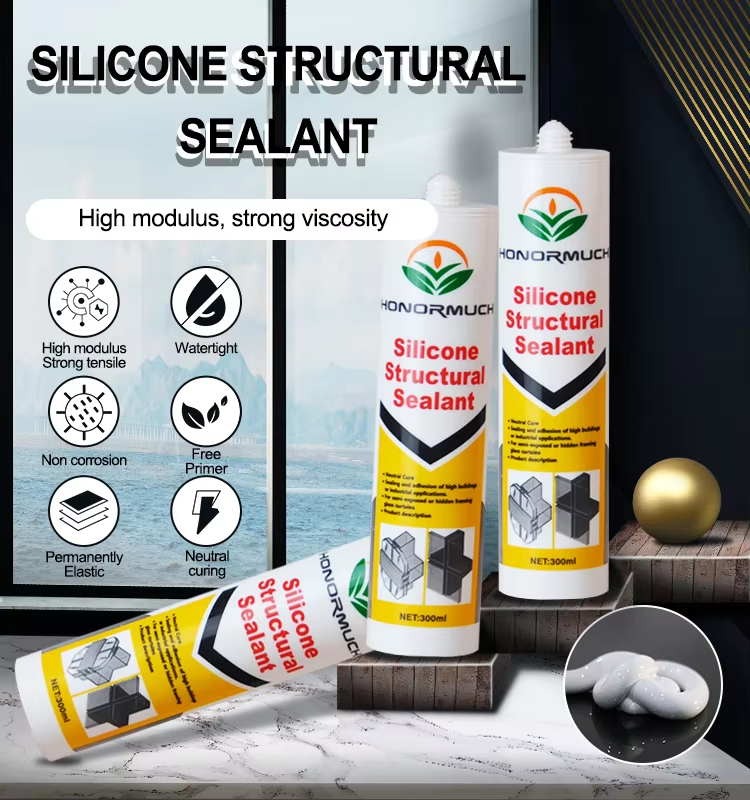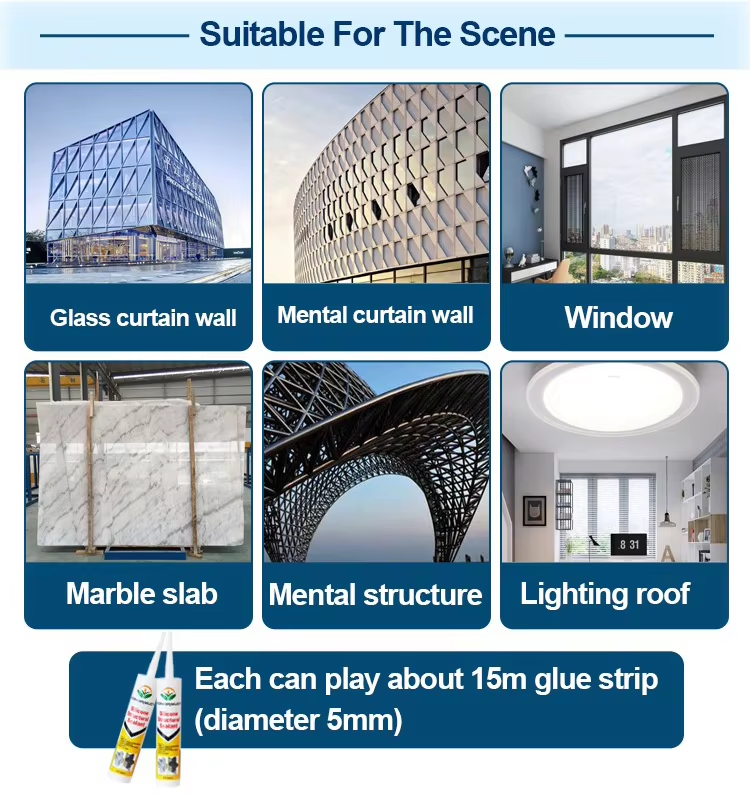All the sealant knowledge you want to know is here
1. What should I do if a lot of bubbles appear when applying glue?
In general, the causes and solutions of bubbles are as follows:
(1) Cause: bubbles generated during glue injection; Solution: smooth glue joints and even glue injection;
(2) Cause: the proportion of component B is too high, the reaction is too fast, and the bubbles cannot be completely discharged; Solution: reasonably adjust the relative proportions of components A and B;
(3) Cause: bubbles exist in the glue itself; Solution: replace with a good quality sealant;
(4) Cause: during the construction of weather-resistant glue, the foam rod is damaged and deflated; Solution: fill the foam rod as little as possible without damage, with the damaged side facing inward;
(5) Cause: the glue joint is damp; Solution: ensure that the glue joint is dry during construction.
Q2. What are the requirements for the performance of sealants in bathrooms?
Bathrooms are mostly cool and humid environments, which are prone to breeding bacteria, so there are higher requirements for the mildew resistance of sealants and lower requirements for elasticity. The joints of shower doors, toilets, bathtubs, sinks, etc. in the bathroom are sealed with anti-mildew sealants, mainly silicone anti-mildew sealants, which are relatively soft after curing.
Q3. Door and window glue cracks and powders
In engineering projects, cracking and powdering of door and window glue are serious quality problems, which will cause the door and window glue seal to fail, resulting in water leakage and air leakage.
In general, the causes and solutions for cracking and powdering are as follows:
(1) Cause: If the injection depth of door and window glue is not enough, the glue will be too thin or too thin in some parts. The cured glue seam cannot withstand the displacement deformation caused by external force, and cracking may occur; Solution: Since the sizes of different door and window joints are different, the injection size of door and window glue should be adapted to the size of door and window joints to ensure that the door and window glue and the edge substrate have sufficient bonding area and bonding thickness.
(2) Reason: Inferior door and window glue is used. In order to reduce costs, some door and window glue manufacturers have significantly reduced the content of silicone base polymers and filled a large amount of cheap mineral oil and powder fillers to produce oil-filled door and window glue. This type of door and window glue will not have obvious problems when it is first used, but because the mineral oil filled in the glue is an alkane substance, it has poor compatibility with silicone glue. After a period of time, the mineral oil will migrate out of the glue; and its silicone content is low and its aging resistance is poor. After a period of use, the glue will obviously harden and shrink, and even crack and powder. Solution: The quality of door and window glue products on the market is uneven, and a considerable part of the door and window glue products in circulation are filled with mineral oil. To avoid the above situation, you should choose brand products with guaranteed quality and no mineral oil filling.



